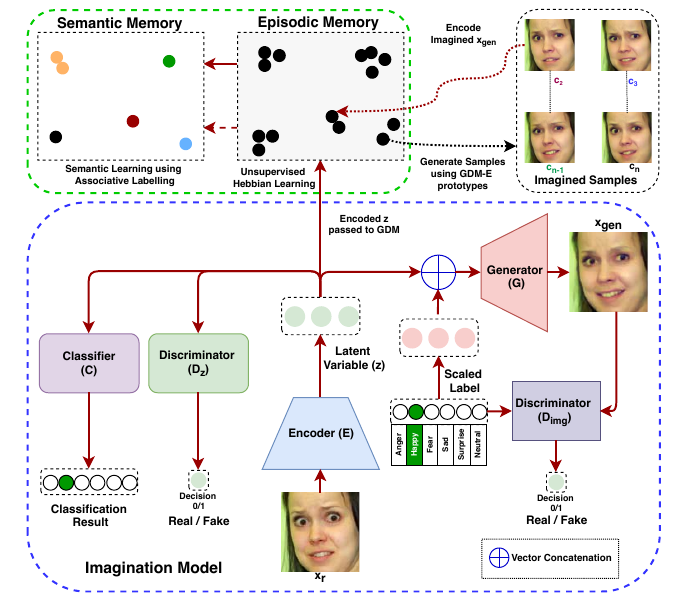CLIFER: Continual Learning with Imagination for Facial Expression Recognition
Super Short Description
- Paper Link
- This paper works on facial expression recognition (6 expressions. For example: anger, happiness etc). Its novelty lies in its Imagination Model: generating new images of same person with different facial expressions from the orignal image. Another interesting portion is the integration of this Imagination model as a data augmentation module to the main model, the GDM module.
A Short Background
- FER : Facial expression recognition
- Dual memory: Episodic and semantic.
- Episodic memory example: David Beckham smiling face in last video. This memory should change pretty rapidly.
- Semantic memory example: A typical european smiling face. This memory should change relatively slowly.
- Continual Learning (CL): Methodology with which the model should improve on getting incremental amount of data with time. Similar to online learning in spirit.
- GDM module: A Continual learning model. Implements the human inspired dual memory system using artifical neurons.
Understanding the Paper
Imagination Model
Model is adapted from ExprGAN. It has two discriminators: \(D_z\) to regularize the latent space embedding and \(D_{img}\) to regularize the generated images. \(D_z\) ensures that latent space embedding of generated images is similar to original image embeddings. This helps to reduce distorting in generated images. \(D_{img}\) ensures that generated images actually have the intended face expressions.

How does GDM Module Ensure Rapid Non-Overlapping Learning in Episodic Memory
- Non overlapping means that each embedding is attempted to get stored as they are. Tendency to encode the common features across embeddings of same face expression type is discouraged.
- Learning rate is high.
- Its objective is to retain the input to a high degree of precision. It is made quite eager to add new neurons.
How does GDM Module Ensure Slow Overlapping Learning in Semantic Memory
- Learning rate is kept low.
- It has a relatively higher bar for adding a new neurons.
- This model takes as input best representations of face latent embeddings from the episodic memory. It uses mode for fixing the feature prototypes for different expression types.
